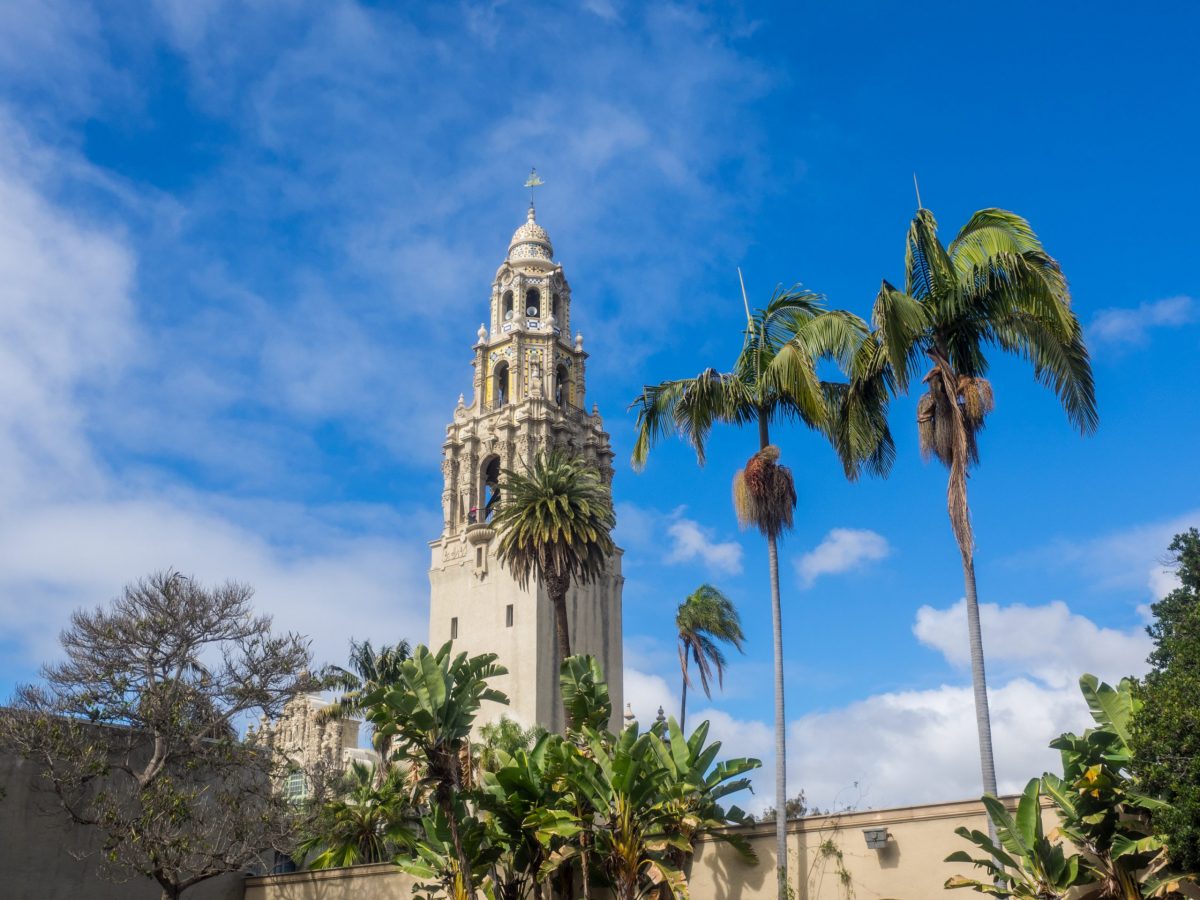
Federal Funding "Pause": Five-Alarm-Fire, Doused for Now
02.04.2025 | Linda J. Rosenthal, JD

“It’s us, your new museum.”
In the midst of the pandemic, the 100-year-old San Diego Museum of Man – nestled among a dozen or so major cultural institutions in beautiful Balboa Park – formally announced not just a change of name but also the “promise of a new way of thinking about museums.”
And, according to BoardSource’s CEO, Anne Wallestad, “The Museum of Us in San Diego is a prime “example of purpose-driven board leadership in action.” It’s the sole organization she chose to illustrate this groundbreaking call for entirely new thinking and action by nonprofit boards. See The Four Principles of Purpose-Driven Board Leadership (March 10, 2021) Stanford Social Innovation Review.
In our May 11, 2021 post, Philanthropy Thought Leaders: Purpose-Driven Board Leadership, we featured this “Four Principles” essay which was a collaborative effort by Ms. Wallestad, her team at BoardSource, and additional partners and colleagues.
This SSIR article has garnered effusive praise from many quarters. It’s a “must-read,” says Phil Buchanan, head of the Center for Effective Philanthropy. It presents an “… alternative governance framework that, if adopted, could be the most important mindset shift in the nonprofit sector” that Mr. Buchanan has “seen in two decades in [his] job.”
Nonprofit leaders and experts have been asking a tough question recently: “Are nonprofit boards, as they exist today, equipped to govern the social good organizations for which they are responsible?” The answer: There are serious concerns about the “… adequacy of the prevailing model of nonprofit governance.” Historically, the primary focus of nonprofit boards has been “on the organization itself and its survival.”
Instead, though, the nonprofit board should “prioritize decision-making and direction-setting on the organization’s charitable purpose, even ahead of the organization itself.” See Purpose-Driven Board Leadership, Legally Speaking (March 29, 2021) Gene Takagi, Esq., NEO Law Blog.
“In the face of increasingly pressing systemic inequities,” Ms. Wallestad explains, “nonprofit boards must change the traditional ways they have worked.” Instead of focusing on the survival of the organization itself, she explains, the directors should pivot: namely, to “prioritize an organization’s purpose, show respect for the ecosystem in which they operate, commit to equity, and recognize that power must be authorized by the people they’re aiming to help.” These are the four principles of purpose-driven board leadership.
The transformation of the San Diego Museum of Man to the Museum of Us was no snap decision. “A change to a more inclusive name was first considered in 1991” but not made. Later, “in 2017, the Board of Trustees felt a change in name should be considered again, especially as the Museum’s mission and program strategy had significantly shifted.”
Historically, the Museum of Man focused on traditional anthropology: It was “known for its academic exhibits focusing on ancient civilizations and human evolution.” But, for the past ten years, explains CEO Micah Parzen, they have “turned the very idea of a museum on its head, challenging assumptions every step of the way.” The mission evolved into “inspir[ing] human connections by exploring the human experience.” They do that “by sharing alternative narratives that challenge peoples’ assumptions and help them see the world from different perspectives.” The offerings of the Museum of Us now “delve into universal themes that cut across time and cultures.”
According to the August 2, 2020, press release heralding the new era in this museum’s history, the process resulting in the name change took place over two years and “was marked by extensive community involvement – including stakeholder meetings, surveys, and an interactive name change exhibit.” The final name selection particularly reflected the push for gender-neutrality and inclusiveness. The museum’s new name, according to trustee Nora Taylor Jaffe, “corrects the exclusion of all who do not identify with the word Man, and welcomes folks to a place that’s about ‘All of Us’ – which also happens to be our new tagline.”
One of the guiding principles is “decolonization.” On the new website of the Museum of Us, there’s an important admission: Its lovely Balboa Park location is “on the unceded ancestral homelands of the Kumeyaay people.” As part of the process of inviting stakeholder participation into the museum’s changes of name and purpose, the Kumeyaay tribe’s input was solicited.
“A traditional board asks: What is best for our organization?” But “a purpose-driven board asks: What is best for the desired social outcome we seek?”
Can a shift to purpose-driven board leadership begin slowly and without radical changes in board composition or leadership? Ms. Wallestad explains: “A shift toward purpose-driven board leadership is transformational, but the initial steps are incremental enough that every board can do it, including yours.”
“Leaning into purpose-driven board leadership can begin without initial collective action from the board and does not require immediate radical shifts in board composition or leadership—requirements that can stall any action at the board level.” Ms. Wallestad explains that “it’s within the reach of existing organizations and boards” because “it is an evolutionary approach. It does not require us to tear down the existing board structure and create something new from scratch.” Instead, “boards can leverage the flexibility of the existing board structure as a container and begin filling it differently based on a new understanding of the board’s role and what that requires in terms of the people, perspectives, and mindsets needed to fulfill that role.”
Does such a change violate any of the traditional legal duties of nonprofit directors? No, according to Ms. Wallestad. “The duty of loyalty is one of a board’s three essential legal duties, a legal perspective aimed at avoiding self-dealing and conflicts of interest.” The problem is that, “in practice, the duty of loyalty is often interpreted as the responsibility to think only of the organization when making governing decisions.” But this interpretation of the duty of loyalty is much too narrow. “Instead, boards should focus their loyalty to the organization’s purpose or reason for being, fidelity to the reason that the organization exists and—by extension—to the people and communities its work impacts. What is best for purpose and community is not always synonymous with what’s best for the organization.”
Nonprofit expert Gene Takagi, Esq., agrees. See the excellent discussion of this point in his March 29, 2021 blog post. “In a nonprofit context, where there are no shareholders, the best interests of the corporation must be tied to how well it advances its purpose…both short-term and long-term ….” But “a corporation’s perpetual existence is, in and of itself, neither a valid 501(c)(3) purpose nor a possibility. While the nonprofit board may lawfully act to sustain the corporation’s existence, this should be incidental to advancing the corporation’s purpose….”
The entire revamped website of the Museum of Us reflects the commitment of the board, staff, supporters, and community stakeholders to fundamental change along the lines described by Anne Wallestad in her “Four Principles” essay.
After a long legacy “as the San Diego Museum of Man—and ten years of thoughtful work to decolonize their practices—they made the significant decision” to go ahead. All four of the purpose-driven board leadership principles are in action within this organizational transformation, Ms. Wallestad explains.
Purpose first: They take seriously the “role as an organization that exists to expand minds and thinking about the human experience. They have been willing to make significant decisions to put purpose first, even at some level of organizational sacrifice.”
Equity mindset: The “decolonizing effort began with an acknowledgment that many of the cultural resources they steward were acquired in ways that were deeply problematic….This led to a much broader set of decolonizing initiatives that now go well beyond cultural resources to include the museum’s exhibits and educational programs, and its marketing, governance, human resources, and even fundraising practices….”
Community voice and power: “…They listened closely to community feedback through the renaming process and put Indigenous communities in the driver’s seat about how best to handle their belongings ….”
Ecosystem awareness: The museum is a “thoughtful ecosystem player…., especially … in its land acknowledgment practice, which recognizes that the museum sits on the unceded ancestral homeland of the Kumeyaay peoples,…. Land acknowledgments are present … everywhere.”
“Purpose-driven board leadership makes explicit what is different about social sector governance (as opposed to corporate governance) and how more traditional ways of thinking about nonprofit governance fail to acknowledge the unique charge of social sector organizations and the boards that lead them.”
— Linda J. Rosenthal, J.D., FPLG Information & Research Director
